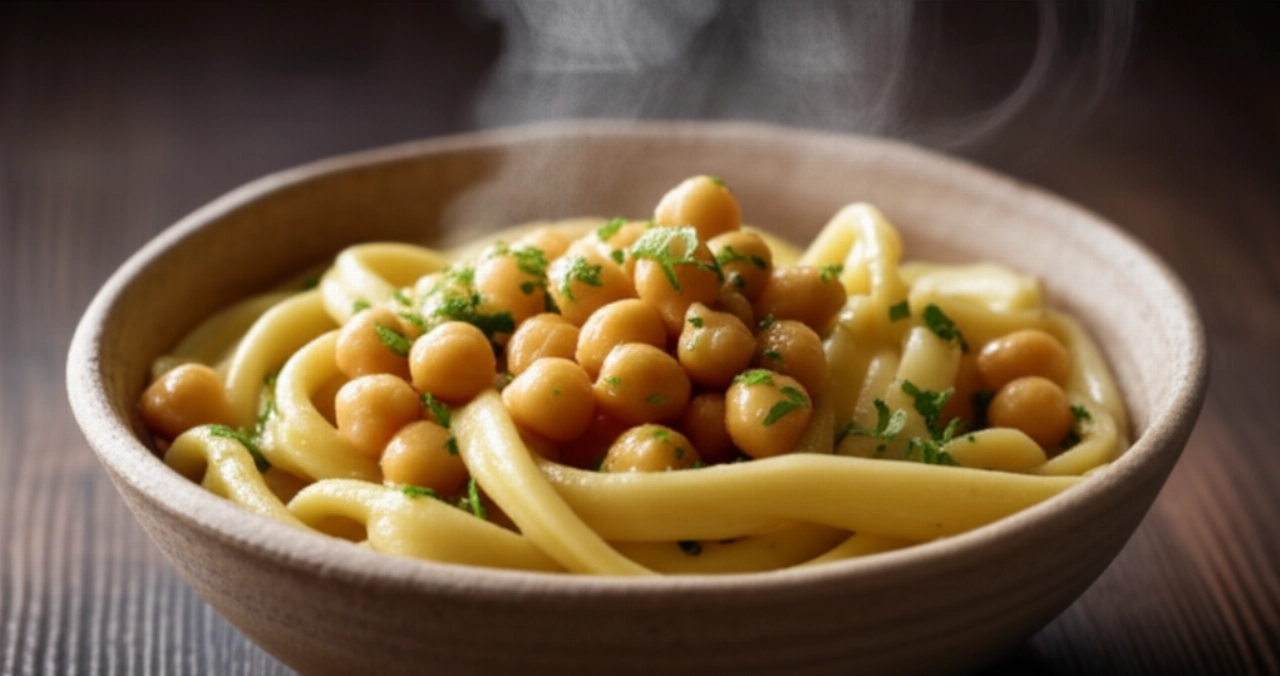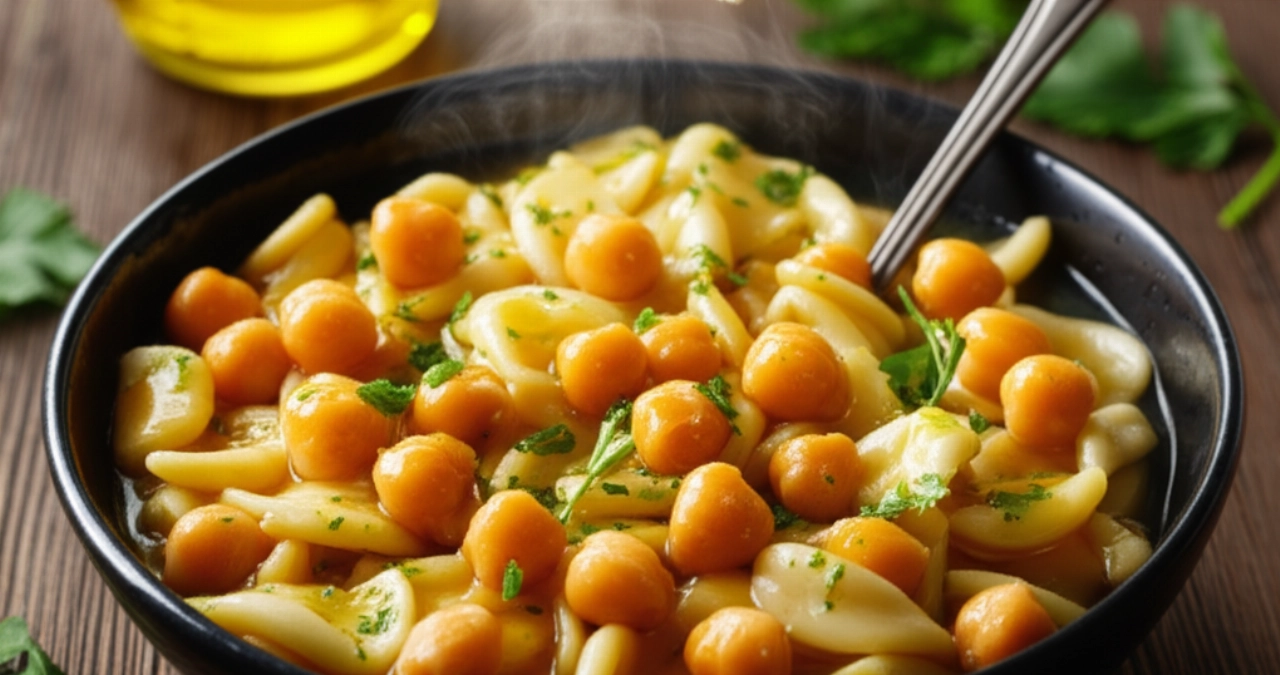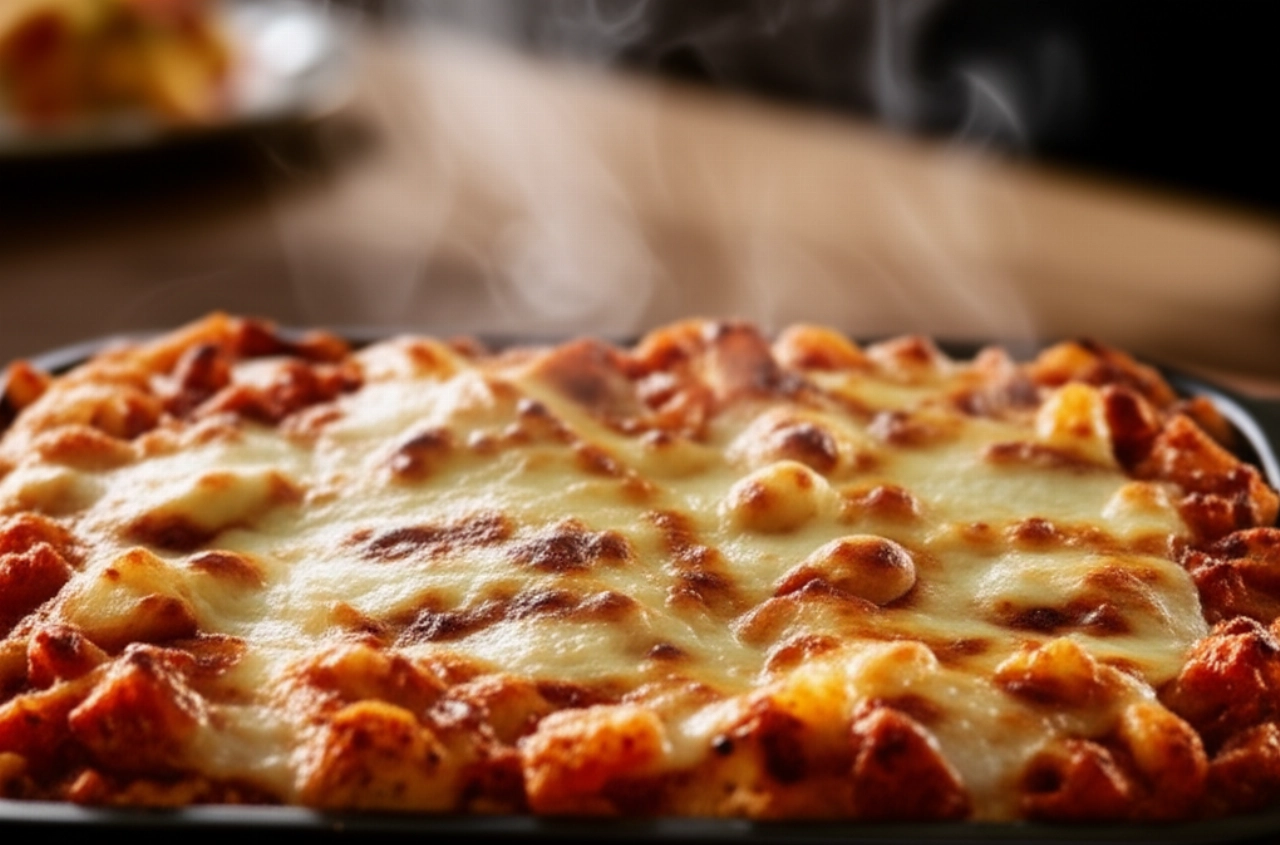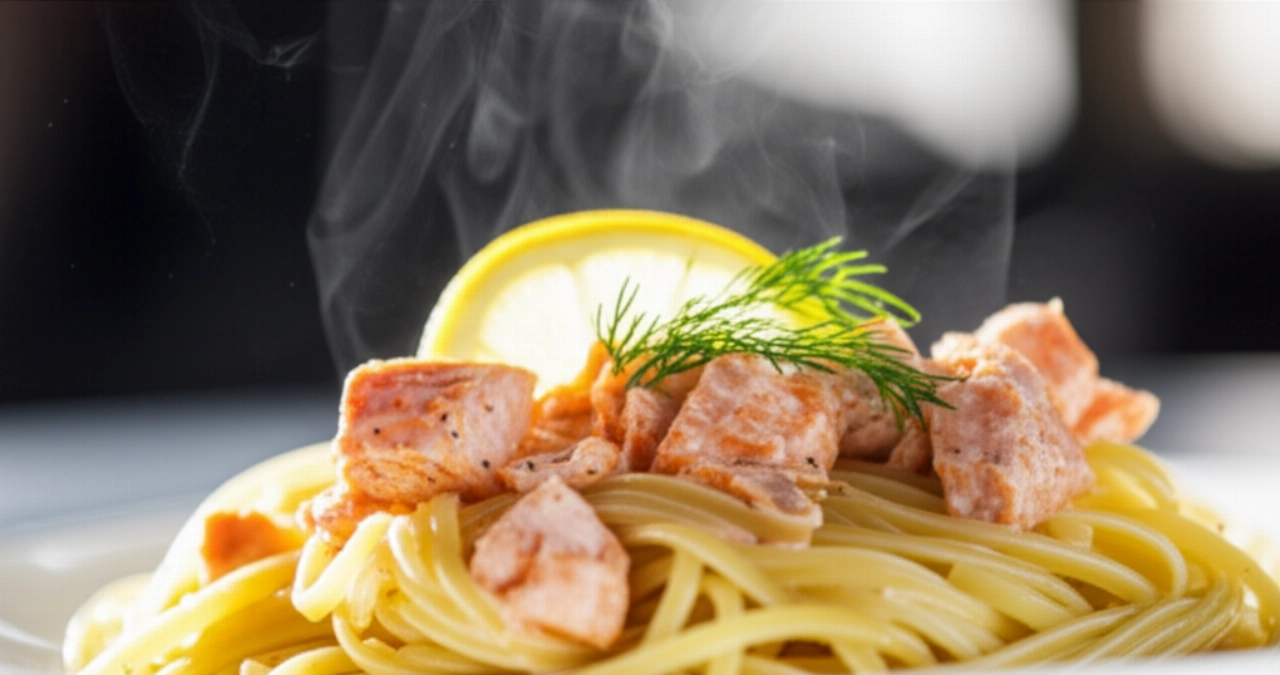There's a scent that smells of home, tradition, and a warm embrace, a scent that takes you back in time to the simple yet unforgettable flavors of grandma's cooking. I'm talking about Pasta and Chickpeas, a true ode to humble cuisine, yet rich in taste and nutrition.
Do you dream of bringing to the table a plate of pasta and chickpeas so creamy it coats your palate, with perfectly tender chickpeas and a thick, flavorful broth? But how many times have you ended up with a broth that's too watery, bland chickpeas, or overcooked pasta that ruins everything? Finding the right recipe, one that guarantees success, seems like a challenge.
Make yourself comfortable. On this page, you won't just find a list of ingredients, but the definitive guide, full of tricks and tips, to prepare the best Pasta and Chickpeas of your life. I promise you that, by following my advice, success is guaranteed and your dish will be a triumph of flavors and textures. Get ready for applause!
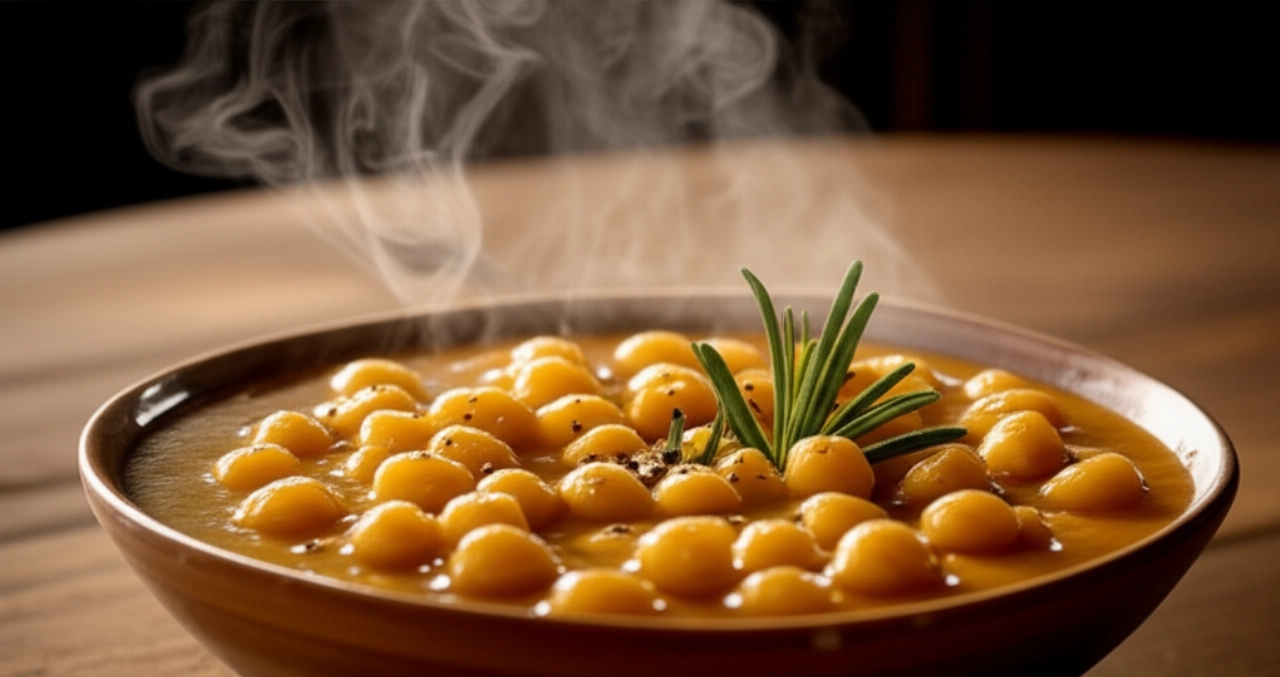
Smart Ingredients: The Choice That Makes the Difference
For such a simple dish, the quality of the ingredients is fundamental. It's not just a list, but a thoughtful selection for your success.
- Chickpeas: The heart of the dish. You can use dried chickpeas (to be soaked for at least 12 hours and then boiled) for a more intense flavor and robust texture, or good quality canned pre-cooked chickpeas to save time. If you choose pre-cooked, rinse them well under running water to remove the preserving liquid.
- Pasta: Opt for a short shape that "catches" the sauce well, such as ditalini, quadrucci, or maltagliati. Homemade egg pasta, if you have time, will add a sublime touch. Otherwise, good quality durum wheat semolina pasta will hold up well during cooking.
- Tomato: A tablespoon of tomato paste or a few tablespoons of quality tomato passata will give color and depth to the broth without overpowering the chickpea flavor. Don't overdo it; it should be an accent, not the main character.
- Vegetable Broth: Homemade is always the best choice. A good broth with carrot, celery, onion, and a few cherry tomatoes is the base for a comforting flavor. If you don't have time, a good organic vegetable bouillon cube can be an alternative, but use it sparingly.
- Aromatics: Garlic, fresh rosemary, and a pinch of chili pepper (if you like it) are the perfect allies to enhance the flavor of the chickpeas. Rosemary, in particular, pairs divinely with legumes.
- Extra Virgin Olive Oil: Of excellent quality, for a perfect aromatic base for the soffritto and for a final drizzle that enhances all the flavors.
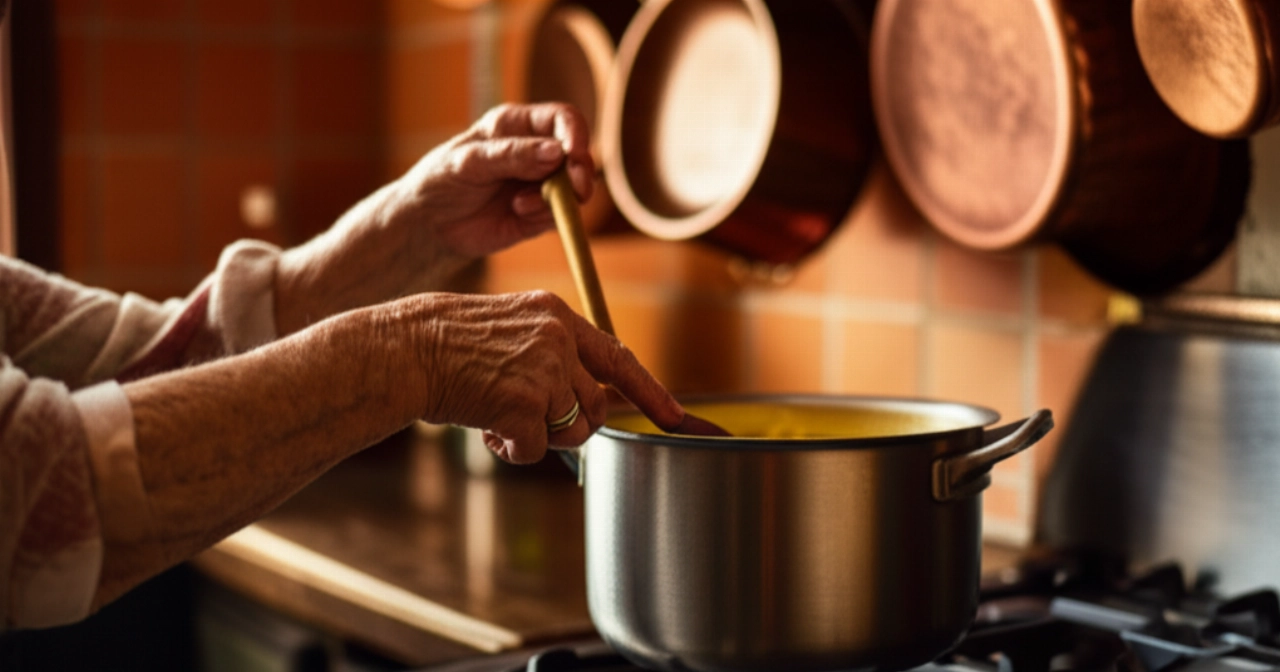
The 3 Mistakes That Make Pasta and Chickpeas Bland or Watery (and How to Avoid Them)
Fear not, I'm here to reveal the most common pitfalls and how to avoid them, guaranteeing you a chef-worthy result!
- Chickpeas Not Cooked Perfectly: If using dried chickpeas, soaking and cooking must be perfect. Hard chickpeas ruin the texture. If using pre-cooked ones, don't cook them too long in the sauce, otherwise they will fall apart. The secret is to add them at the right time.
- Insufficient or Too Much Broth: Insufficient broth will make the dish dry, too much broth will make it a watery soup. The key is to add it gradually, one ladle at a time, until the desired consistency is reached. It should be creamy, not liquid.
- Lack of Soffritto and Aromatics: A well-made soffritto is the foundation of everything. Don't skimp on garlic and rosemary. They are what give that rustic and comforting flavor. And don't forget a pinch of chili pepper for that extra kick!
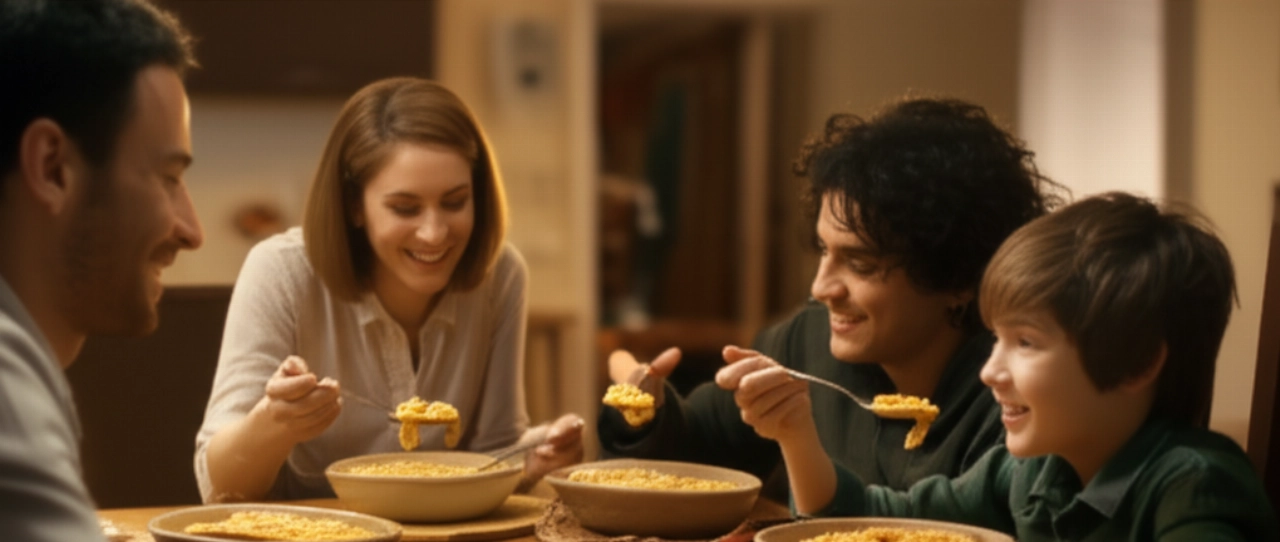
The Extra Touch: My Grandmother's Secret Tip
My grandmother, the queen of simple yet ingenious cooking, had a trick to make her pasta and chickpeas unforgettable. After cooking the chickpeas, she would take a small portion (about a quarter) and coarsely mash them with a fork or quickly pass them through a food mill. She would add this "cream" to the broth towards the end of cooking. This small gesture not only naturally thickened the broth but also released all the starch from the chickpeas, making the dish incredibly creamy and comforting, without the need for thickeners. Try it, and you'll taste the difference!
Let's Prepare Pasta and Chickpeas Together: The Step-by-Step Guide
Now that we have all the secrets, let's get cooking. Follow each step with confidence, and success will be yours!
- Prepare the Chickpeas (if dried): If using dried chickpeas, soak them in cold water for at least 12 hours. The next day, drain them, rinse them, and boil them in plenty of lightly salted water with a bay leaf or a sprig of rosemary until tender (about 1-2 hours, depending on quality). If using canned ones, rinse them well under running water.
- Prepare the Soffritto: In a large, heavy-bottomed pot (ideally terracotta or cast iron), pour a generous drizzle of extra virgin olive oil. Add a whole garlic clove (which you'll remove at the end of cooking) or finely chopped garlic, and a sprig of fresh rosemary. If you like, add a pinch of chili pepper. Sauté over low heat until the garlic is golden and the rosemary has released its aroma.
- Add Tomato and Chickpeas: Add the tablespoon of tomato paste (or passata) and toast for a minute, stirring. Add the chickpeas (already cooked or rinsed if canned). Stir well and let them flavor for a few minutes.
- Create the Chickpea Cream (Grandma's secret): Take about a quarter of the chickpeas from the pot and coarsely mash them with a fork or ladle, directly in a separate dish. Set this cream aside.
- Add Broth and Pasta: Pour the hot vegetable broth into the pot, covering the chickpeas. The broth should be sufficient to cook the pasta and achieve the right consistency. Bring to a boil. When it boils, add the pasta.
- Cooking and Creaming: Cook the pasta, stirring often, adding more hot broth one ladle at a time if necessary, to maintain the right creaminess. During the last 5 minutes of pasta cooking, add the chickpea cream you prepared. Stir well to combine.
- Rest and Serve: Once the pasta is cooked (al dente!), turn off the heat. Let the pasta and chickpeas rest for a couple of minutes, covered, so that the flavors meld and the creaminess settles. Serve with a drizzle of raw extra virgin olive oil and, if you like, a sprinkle of freshly ground black pepper or Parmigiano Reggiano.
Tips and Frequently Asked Questions about Pasta and Chickpeas
Here are some answers to the questions I'm most often asked, to clear up any doubts you may have.
- Can I use only dried chickpeas? Of course! In fact, they will give you a more authentic flavor and a more robust texture. Just remember the soaking and preliminary cooking.
- How can I make my pasta and chickpeas creamier? Besides Grandma's trick of mashing a portion of the chickpeas, you can blend a small part of the broth with some cooked chickpeas before adding it to the rest. Another secret is to stir in a drizzle of raw oil and a tablespoon of broth off the heat, mixing vigorously.
- Can I prepare pasta and chickpeas in advance? You can prepare the chickpea sauce in advance and store it in the refrigerator for 2-3 days. However, it's always best to cook the pasta just before serving to prevent it from overcooking and absorbing too much liquid. At most, cook it very al dente and finish cooking just before serving.
- What is the best pasta to use? Short shapes like ditalini, quadrucci, maltagliati, or even broken spaghetti are ideal because they blend well with the chickpeas and creamy broth.
- Can I add other ingredients? Of course! Some people like to add a bit of pancetta or lard to the soffritto for a more decisive flavor. You can also enrich it with other vegetables like diced carrots or celery in the soffritto.
There you have it! Now you no longer have just a recipe, but all the secrets to bring to the table a dish that tastes of home, tradition, and love. A true comfort food that warms the heart and the palate.
Don't be afraid to experiment. Cooking is an act of creativity and love. But start with this solid and infallible base, and you'll see that applause won't be lacking. Your Pasta and Chickpeas will be a masterpiece of flavor and texture.
Have you tried our recipe? We're very curious to see your masterpiece! Leave a comment below, tell us how it went, or share a photo on Instagram by tagging @CercaRicette.it. If you loved this Pasta and Chickpeas, you can't miss our recipe for Pasta and Beans, another classic of humble cuisine, or for a perfect side dish like Sautéed Chicory.
